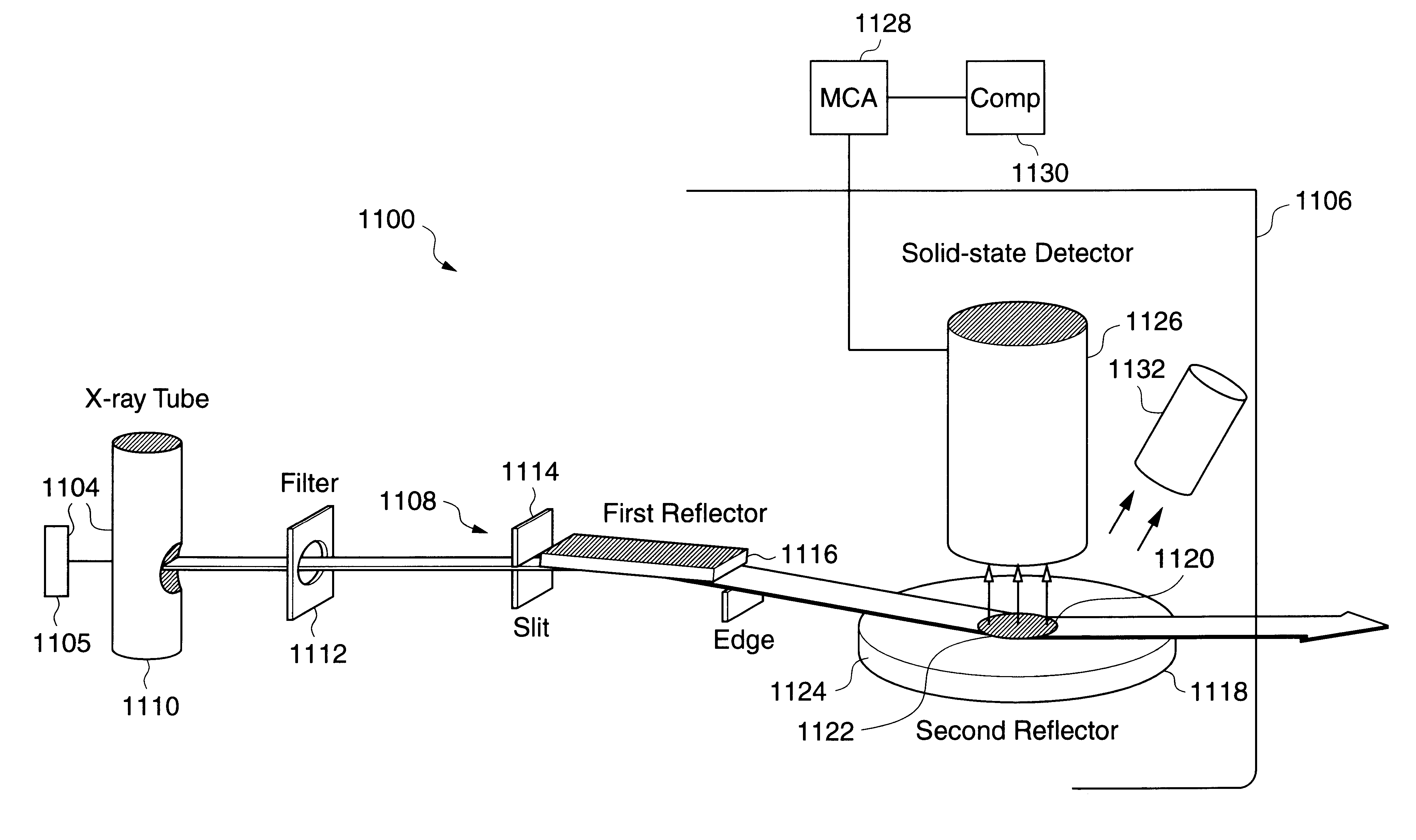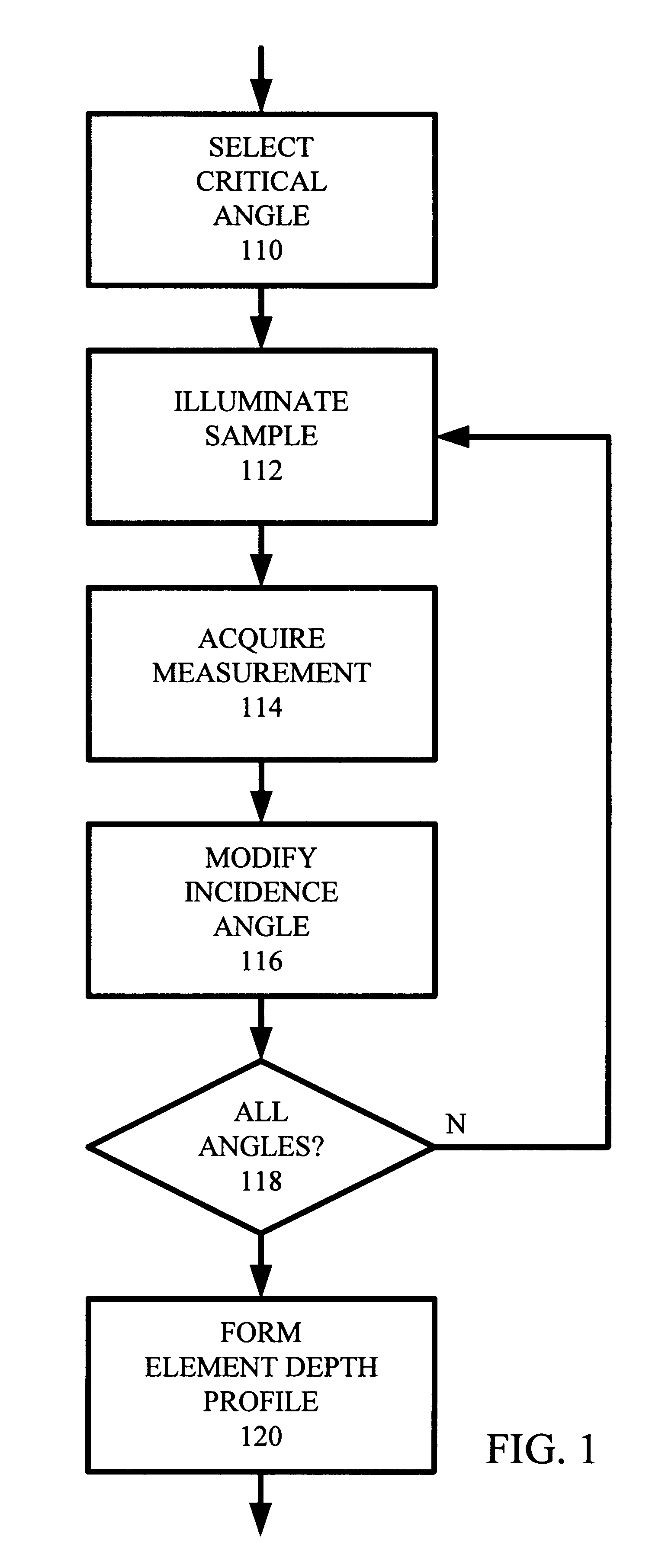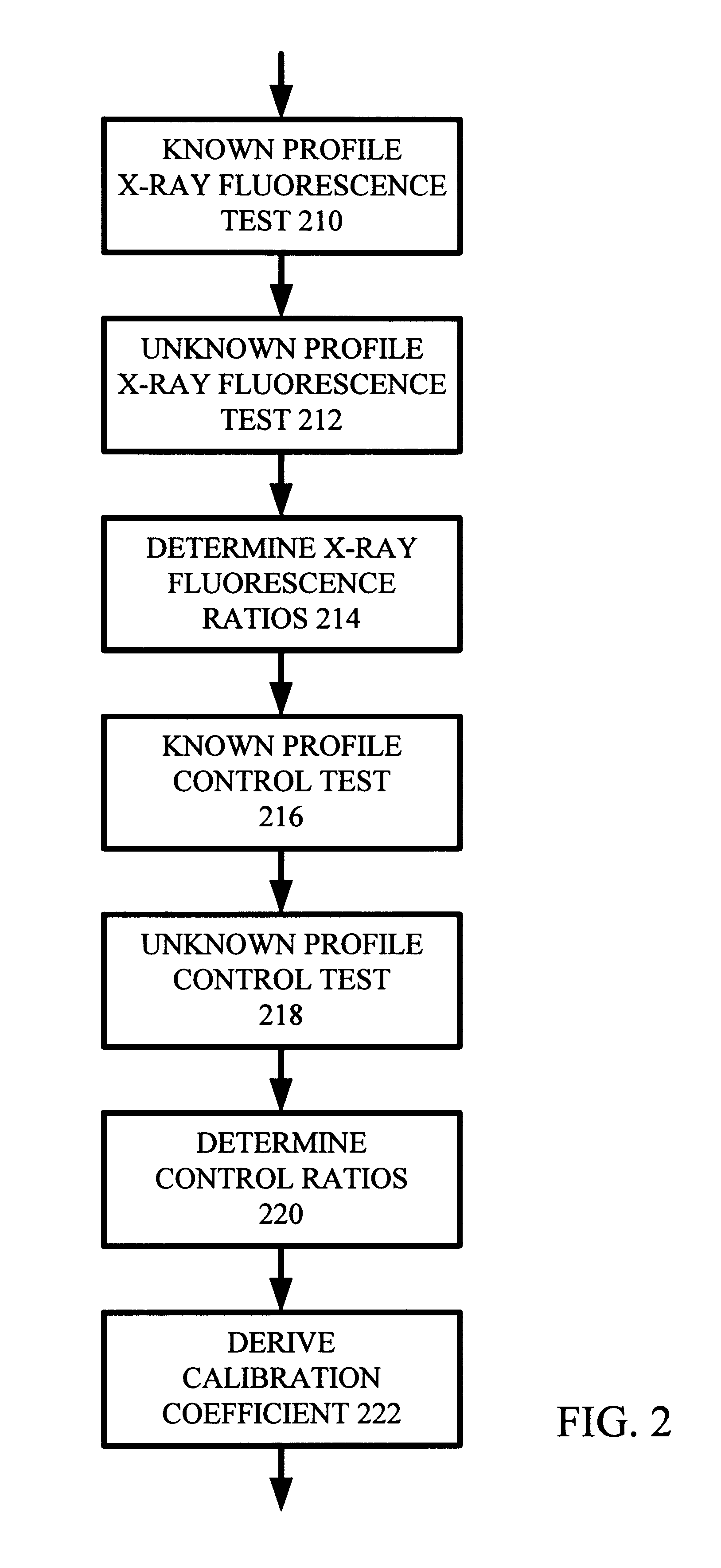Depth profile metrology using grazing incidence X-ray fluorescence
a grazing incidence and depth profile technology, applied in the field of measurement techniques, can solve the problems of affecting the accuracy of the reflected probe beam, the inability to meet the requirements of being an inexpensive, non-destructive technique requiring little maintenance, and the destructive nature of the sims
- Summary
- Abstract
- Description
- Claims
- Application Information
AI Technical Summary
Problems solved by technology
Method used
Image
Examples
Embodiment Construction
)
Referring to FIG. 1 a schematic flow chart that illustrate a method for determining depth profiles and implant dose for a selected element. A primary incident X-ray beam has excellent depth resolution at small angles near a critical angle of total reflection .phi..sub.crit that is selected according to the material to be analyzed in a select critical angle operation 110. In one application, X-ray fluorescence measurements are performed to profile the depth of a dopant used in semiconductor manufacturing such as arsenic, phosphorus, and boron. An X-ray beam is employed to illuminate a substrate sample at a selected incident angle that is a small angle near the critical angle .phi..sub.crit in an illuminate sample operation 112. An X-ray fluorescence measurement is acquired at the selected incident angle and stored in an acquire measurement operation 114. Following acquisition of a sample, the angle of incidence is modified in preparation for a subsequent sample in a modify incidence...
PUM
 Login to View More
Login to View More Abstract
Description
Claims
Application Information
 Login to View More
Login to View More - R&D
- Intellectual Property
- Life Sciences
- Materials
- Tech Scout
- Unparalleled Data Quality
- Higher Quality Content
- 60% Fewer Hallucinations
Browse by: Latest US Patents, China's latest patents, Technical Efficacy Thesaurus, Application Domain, Technology Topic, Popular Technical Reports.
© 2025 PatSnap. All rights reserved.Legal|Privacy policy|Modern Slavery Act Transparency Statement|Sitemap|About US| Contact US: help@patsnap.com



